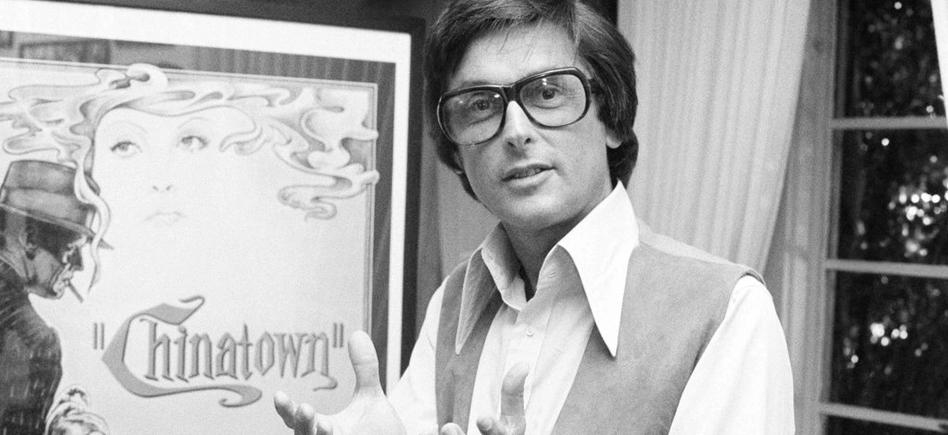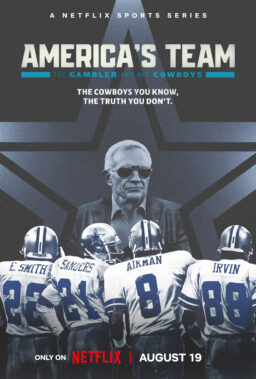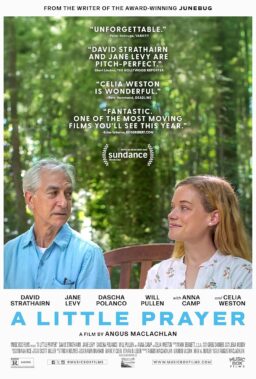It is no exaggeration to say that if the wild life and times of producer Robert Evans had been the invention of a particularly creative screenwriter, most studios probably would have taken a pass on it on the grounds that it was simply too crazy and unlikely to be believed. After all, this is a guy who was plucked from obscurity and groomed for Hollywood stardom that didn’t quite take, plucked once again for a behind-the-scenes role that led to his participation of a slew of popular and critically acclaimed films that helped fuel what it generally considered to be the last great sustained period of American filmmaking, lost nearly everything during a subsequent decade or so of personal and professional disasters and then managed to pull off an unexpected third act resurrection through the publication of a memoir that would become one of the most infamous and undeniably entertaining books on contemporary Hollywood. With his passing today in Beverly Hills—where else?—at the age of 89, an era has truly ended and the film industry has lost one of its giants.
Strap in, because this is going to be a wild ride.
Born Robert J. Shapera in New York City on June 29, 1930, Evans spent his early years doing promotional work for Evan-Picone, a fashion company that was founded by his brother Charles, and doing some voice work for a variety of radio shows, making early use of the dulcet tones that would one day become one of his signatures. One day, in a move straight out of classic Hollywood, he was spotted next to the pool at the Beverly Hills Hotel by none other than actress Norma Shearer, who was impressed enough by him to successfully push him, despite his lack of acting experience, into the role of her late husband, legendary studio head Irving Thalberg, in “Man of a Thousand Faces” (1957), a biopic on the life of actor Lon Chaney. Later that year, producer Darryl Zanuck cast him as Pedro Romero in an adaptation of Ernest Hemingway’s “The Sun Also Rises.” According to Hollywood legend, neither Hemingway nor co-star Ava Gardner were particularly impressed by Evans’ acting ability and lobbied Zanuck to replace him, to which the producer reportedly replied “The kid stays in the picture.”
Evans appeared in two more films—he played the title role in “The Fiend Who Walked the West” (1958), a Western remake of the noir favorite “Kiss of Death” (1947), and co-starred with alongside Hope Lange, Diane Baker, Suzy Parker and Joan Crawford in the soapy drama “The Best of Everything”—but soon came to the realization that he did not have the chops required to make it in Hollywood as an actor. Instead, he decided to go where the real power was by becoming a producer, using the money that he accumulated from the clothing business to help fund buying the rights to properties to develop. When he landed the rights to the popular 1966 novel “The Detective” and turned it into a successful 1968 film starring Frank Sinatra and Lee Remick, it inspired a New York Times article on him by Peter Bart that caught the eye of Charles Bludhorn, the head of the Gulf & Western conglomerate that had recently purchased Paramount Pictures. At the time, Paramount was largely on the ropes—at the time, it was only the 9th largest studio—and as a way of shaking things up, Bluhdorn hired Evans to be the new head of production.
With his lack of any executive experience, Evans’s promotion to studio head received as much derision in the industry as his acting career had—I am fairly certain that I still cannot print the nickname that Evans was given in some quarters even a half-century later here—but over the next several years, both he and the studio lucked into an incredible hot streak that saw the studio release such critical and popular success as “The Odd Couple,” “Rosemary’s Baby,” “True Grit,” “Love Story,” “Harold and Maude,” “The Godfather,” “Serpico,” “Save the Tiger,” “The Conversation,” “The Godfather Part II” and “Chinatown.” The degree to which he served on these films depends, inevitably, on who you asked—his claims about how he single-handedly transformed “The Godfather” from the lifeless two-hour potboiler allegedly turned in by Francis Ford Coppola into the three-hour epic we all know and love were so prevalent that one of the requirements that Coppola demanded before agreeing to the sequel was that Evans would have nothing to do with the actual production. That said, Evans did have an enviable ability to pick out worthwhile material and just the right people to bring the projects to the screen—the decision to give Polish filmmaker Roman Polanski his first shot at a big studio film with “Rosemary’s Baby” was seen as an enormous gamble at the time—and between the hit films and his equally colorful personal life (in 1969, he married his third wife, Ali McGraw, just before she became an international screen icon in “Love Story”), he was almost as well-known as the stars of his films and certainly the best-known studio head since the days of Zanuck and Mayer.
He managed to top even those legends in terms of pure power when he hammered out an agreement with Paramount that allowed him to stay on as the studio head while also shepherding his own projects as an independent producer. His first endeavor along these lines was Polanski’s 1974 neo-noir masterpiece “Chinatown,” an Oscar-winning hit that is still regarded as one of the all-time great American films. However, this agreement did not sit well with other producers at Paramount, who felt that the arrangement gave his projects an unfair advantage over theirs. As a result, Evans stepped down as the head of production in 1976 and became an independent producer connected with Paramount. He started off with a bang with the brutal thriller “Marathon Man” (1976), an adaptation of the William Goldman novel that saw the pairing of two of the finest actors of their respective generations, Dustin Hoffman and Sir Laurence Olivier. Based on the novel by a pre-Hannibal Lecter Thomas Harris, “Black Sunday” was a ruthlessly efficient thriller involving the efforts to stop a terrorist attack on the Super Bowl utilizing the Goodyear blimp that was about as good as one could asked for but which somehow failed to connect with audiences. He indulged both Ali McGraw (who had left him a few years earlier for Steve McQueen) and his love of tennis with “Players” (1979), a fairly ridiculous sports drama in which McGraw plays a woman having to choose between her rich and older fiancee or a younger up-and-coming tennis champion (Dean Paul Martin). A dreadful work all across the board—what can you say about a film where Pancho Gonzalez co-stars as himself and delivers the only convincing performance?—it was both a bomb and an embarrassment.
“Urban Cowboy” (1980) was a little better but in its attempt to try to have star John Travolta do for honky tonks what he did for discos a few years earlier with “Saturday Night Fever,” it felt as if Evans was chasing trends instead of setting them. (That said, the film did provide the first great showcase for the talents of Debra Winger and should be celebrated for that reason alone.) Later that year, he put together one of the most peculiar productions of his entire career when, having failed to secure the film rights to the Broadway hit “Annie,” he decided to so a film version of the long-running comic strip/cartoon character “Popeye” that would bring together such disparate talents as iconoclastic director Robert Altman, comedian Robin Williams (who had never starred in a movie before), Shelley Duvall (who, save for “The Shining,” had only appeared in Altman films), writer Jules Feiffer and songwriter Harry Nilsson. When it came out at Christmastime 1980, most critics were kind of baffled by Altman’s live-action cartoon—one perverse enough to present its hero as someone who absolutely hates to eat spinach—and while it was a hit at the box-office, the combination of bewildered reviews and the fact that it didn’t make as much money as “Star Wars” (1977) and “Superman: The Movie” (1978) meant that it would go down in the history books as a failure. Speaking as someone who adored it when it first came out and loves it even more now, I assure you that this dismissal is nonsense—I know of several generations of kids who have seen that movie over the years and I have never known one to come away from it feeling anything other than delight.
Aside from “Popeye,” the Eighties would prove to be a disastrous decade for Evans across the board. In 1980, he was caught trying to pull off a $19,000 cocaine deal with his brother and was charged with trafficking. Although he managed to plead guilty to a misdemeanor—producing a star-studded anti-drug commercial as part of his deal—it made him a pariah in the industry and also signaled that he was indeed a regular user of the drug. A few years later, he hoped to reestablish himself by producing and directing “The Cotton Club,” a period gangster drama inspired by the legendary Harlem nightclub of the same name. In his search for financing, he made the acquaintance of Roy Radin, a producer who offered to join forces with him and bring the film to life. In 1983, Radin was found brutally murdered and while it was eventually determined that Evans had no connection to the crime, the amount of time that it took the case to go through the courts meant that he was tied to yet another crime for years.
Professionally, things were not going much better. In a desperate move to save “The Cotton Club,” Evans turned to Francis Ford Coppola to first rewrite the script and then take over as director. The ensuing production ran way over schedule and over budget and any chance of it succeeding were doomed by the very public war of words between Evans and Coppola over who was responsible for the overages. And yet, despite all the agita, the film, either in its original 1984 iteration or the new and radically recut version released earlier this year (and due to be released on video in December), is a strange but always compelling fusion of fact, fiction, music and violence that may not be the smoothest of works but which contains more great individual moments than most conventionally good movies one could name. An even bigger debacle occurred when “The Two Jakes,” the long-awaited sequel to “Chinatown,” was ready for production with Robert Towne scheduled to direct in addition to writing the screenplay, Jack Nicholson to reprise the role of Jake Gittes and Evans not only scheduled to produce but, at Nicholson’s alleged insistence, to co-star in it as well, over the objections of Towne and the studio. Just as production was about to begin, Evans was fired from his acting job and the once sure-fire project collapsed before the eyes of an astonished industry. When “The Two Jakes” was revived a few years later, it was with Nicholson directing and Evans only serving as producer—although not uninteresting, the film proved to be a financial flop.
By the time the Nineties turned around, Evans was at his lowest ebb but it was then that things unexpectedly turned around for him. “Sliver” (1993) was a dumb would-be erotic thriller designed to cash in on the post-“Basic Instinct” popularity of star Sharon Stone and while it wasn’t a huge hit, it at least got Evans back in the game and over the next few years, he would produce “Jade,” “The Phantom,” “The Saint” and “How to Lose a Guy in 10 Days.” The most significant work bearing his name released during this time would turn out to be not a film but a book. In 1994, he published The Kid Stays in the Picture (nice title), a no-holds-barred, score-settling recounting of his tumultuous life and career that was admittedly self-serving and filled with purple prose but which was so compulsively entertaining to read that those flaws could easily be ignored—if one was to make a list of the most essential books written on the history of Hollywood, this is one that deserves a high place of honor. The book would also become a cult favorite due to a famous audiobook version read by Evans himself in his inimitable (though often imitated) voice and cadence—this may be one of the few times when the audiobook version is even more essential than the print version. The book would also go on to become the basis for an enormously entertaining hit 2002 documentary of the same name with Evans supplying the narration. (He would publish a follow-up book, The Fat Lady Sang, in 2013.)
Before the publication of the book, Evans was the rare behind-the-scenes Hollywood entity to have his persona injected into the popular culture. Although no one saw it at the time, Orson Welles created a sleazy studio executive in his then-unfinished “The Other Side of the Wind” that he later confessed was inspired by Evans. Years later, Blake Edwards, who had had run-ins with Evans while making “Darling Lili” for Paramount, brutally skewered him in his brilliant Hollywood satire “S.O.B.” through a venal executive played by Robert Vaughn. After the publication of “The Kid Stays in the Picture,” Evans homages and imitations became a cottage industry. The crass producers played by Dustin Hoffman in “Wag the Dog” (1997) and Martin Landau on “Entourage” were clearly based on him—Hoffman’s take being the more lacerating of the two. There was a “Mr. Show” sketch in which God was seen recording his autobiography using an approximation of Evans’s famous manner of speaking. Years later, Bill Hader would do a funny riff on him on a episode of “Documentary Now” satirizing “The Kid Stays in the Picture.” Evans himself got in on the fun as well—he played himself in the misbegotten Hollywood satire “An Alan Smithee Film Burn Hollywood Burn” and supplied his voice for an animated TV show inspired by his life called “Kid Notorious.”
In his later years, there were talks of additional projects that never quite came to fruition. There was a long-planned biopic on John DeLorean based on a James Toback script that was going to be made at one point with Brett Ratner. There was talk about teaming with Catherine Hardwicke on a film about a dominatrix. There was even a rumor about the possibility of an original superhero based on a new character created by the late Stan Lee. Instead, he wound up spending his time resting on his laurels. To his credit, at the end of a life and career that was wild and crazy even by the standards of the industry that he knew and loved, he certainly had plenty of them to rest on.












